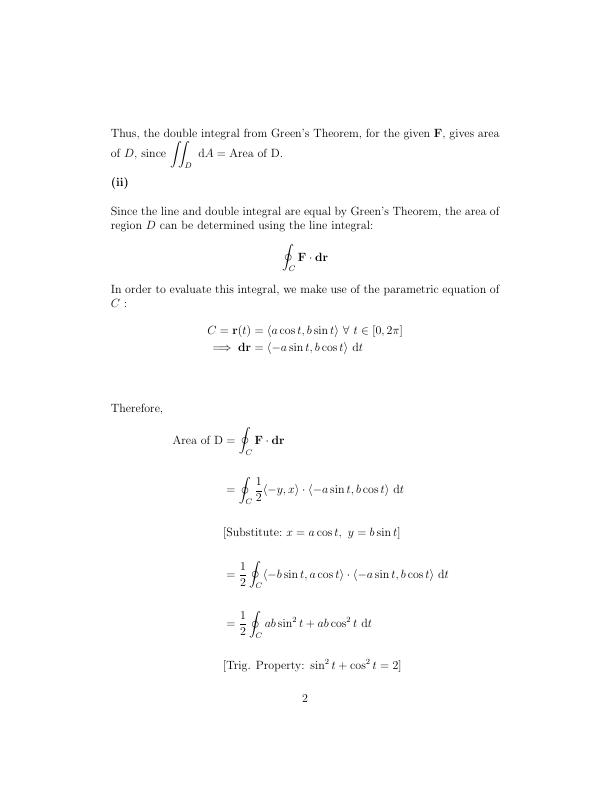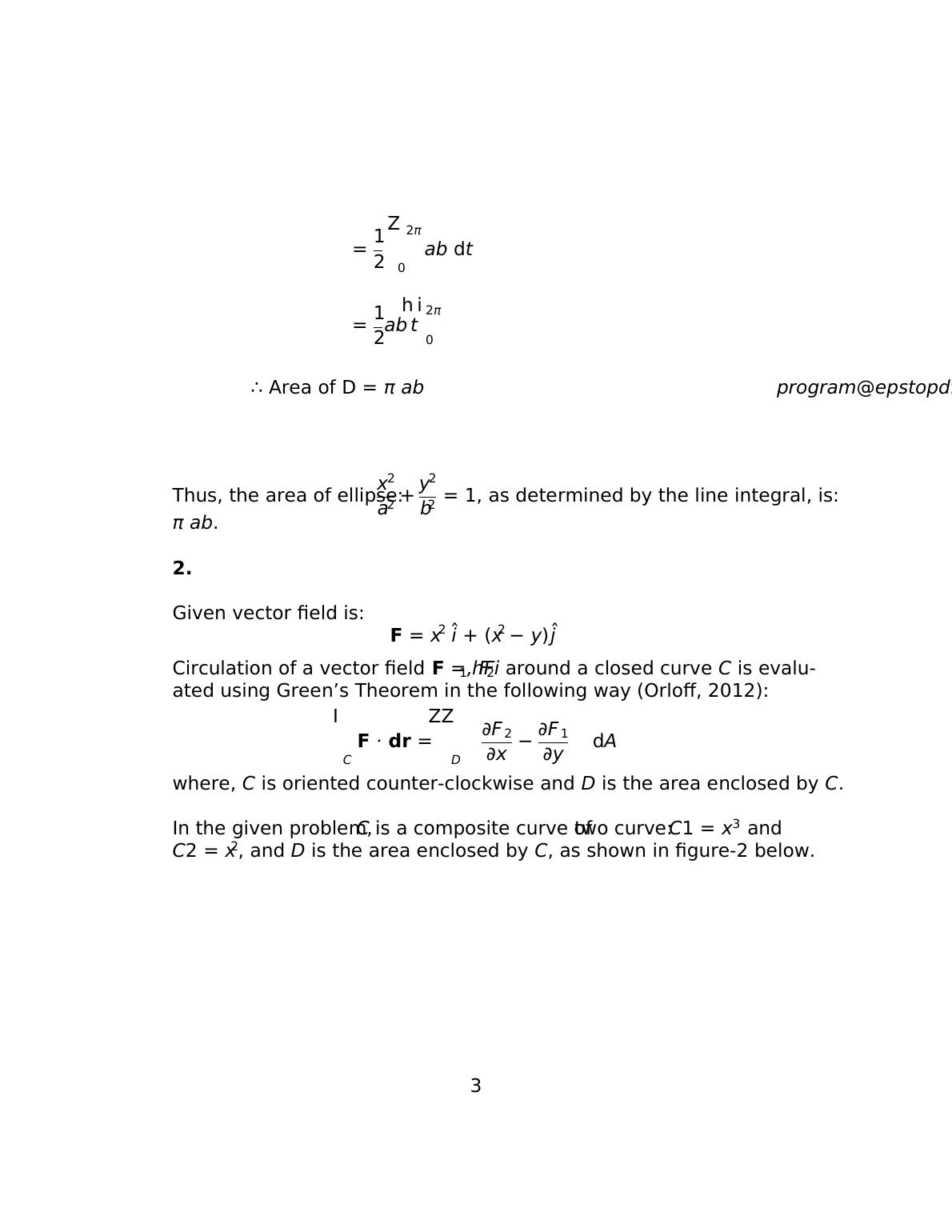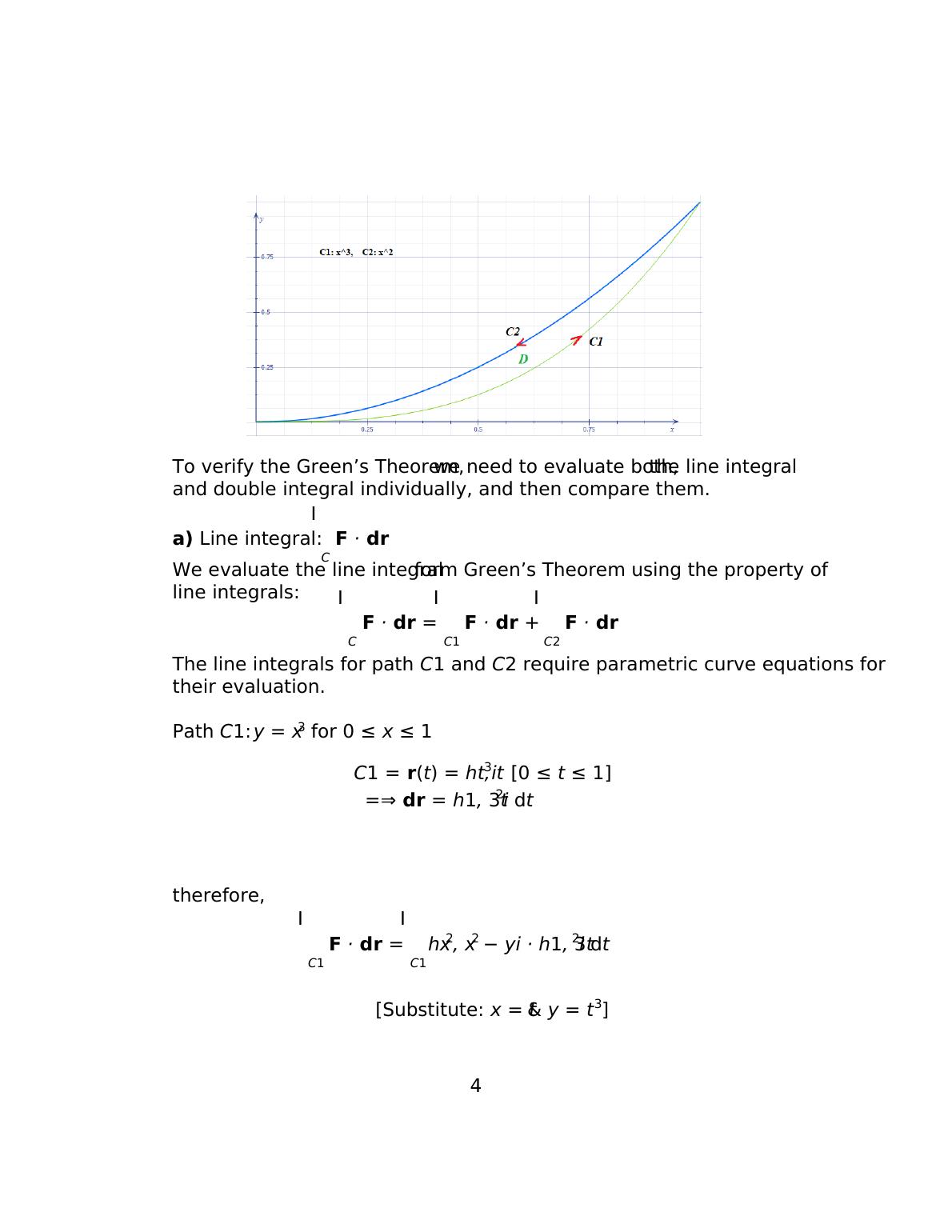Circulation and Area using Green's Theorem
Added on 2023-04-03
13 Pages2259 Words148 Views
End of preview
Want to access all the pages? Upload your documents or become a member.
Green's Theorem and Circulation of Vector Field
|5
|719
|400
Proving Green's Theorem
|9
|1785
|79
Line Integral, Double Integral, Flux and Green's Theorem
|6
|1302
|62
Solutions to Vector Calculus Problems
|7
|1565
|181
Calculus II Solved Problems and Solutions | Desklib
|9
|1753
|180
Assignment on Differential Calculus
|14
|1744
|539



